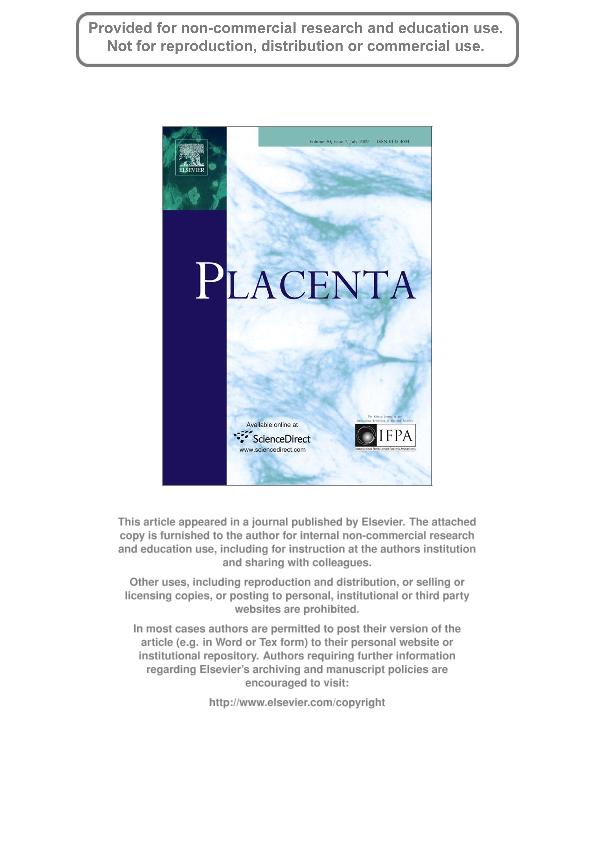Artículo
CFTR May Modulate AQP9 Functionality in Preeclamptic Placentas
Castro-Parodi, Mauricio Omar; Levi, Lorena Natalia ; Dietrich, Valeria
; Dietrich, Valeria ; Zotta, Elsa; Damiano, Alicia Ermelinda
; Zotta, Elsa; Damiano, Alicia Ermelinda
 ; Dietrich, Valeria
; Dietrich, Valeria ; Zotta, Elsa; Damiano, Alicia Ermelinda
; Zotta, Elsa; Damiano, Alicia Ermelinda
Fecha de publicación:
07/2009
Editorial:
Elsevier
Revista:
Placenta
ISSN:
0143-4004
Idioma:
Inglés
Tipo de recurso:
Artículo publicado
Clasificación temática:
Resumen
Preeclampsia (PE) is a hypertensive disorder unique to human pregnancy. Although its causes remain unclear, it is known that altered placental villous angiogenesis and a poorly developed fetoplacental vasculature can affect the transport functions of the syncytiotrophoblast (hST). We have previously observed that in preeclamptic placentas there is an increase in AQP9 protein expression, with a lack of functionality. Up to now, the mechanisms for AQP9 regulation and the role of AQP9 in the human placenta remain unknown. However, there is strong evidence that the cystic fibrosis transmembrane conductance regulator (CFTR) regulates AQP9 functionality. Objective: Here, we studied CFTR expression and localization in hST from preeclamptic placentas in order to investigate if alterations in CFTR may be associated with the lack of activity of AQP9 observed in PE. Methods: The expression of CFTR in normal and preeclamptic placentas was determined by Western Blot and immunohistochemistry, and CFTR-AQP9 co-localization was determined by immunoflurescence. Water uptake experiments were performed using explants from human normal term and preeclamptic placentas treated with CFTR inhibitors. Results: We found that CFTR expression significantly decreased in preeclamptic placentas, and that the hST apical labeling almost disappeared, losing its co-localization with AQP9. Functional experiments demonstrated that water uptake diminished in normal term explants incubated with CFTR inhibitors. Conclusions: These results suggest that CFTR expression decreases in preeclampsia and may thus be implicated in the regulation of AQP9 activity.
Palabras clave:
AQP9
,
CFTR
,
HUMAN PLACENTA
,
PREECLAMPSIA
,
SYNCYTIOTROPHOBLAST
Archivos asociados
Licencia
Identificadores
Colecciones
Articulos(OCA HOUSSAY)
Articulos de OFICINA DE COORDINACION ADMINISTRATIVA HOUSSAY
Articulos de OFICINA DE COORDINACION ADMINISTRATIVA HOUSSAY
Citación
Castro-Parodi, Mauricio Omar; Levi, Lorena Natalia; Dietrich, Valeria; Zotta, Elsa; Damiano, Alicia Ermelinda; CFTR May Modulate AQP9 Functionality in Preeclamptic Placentas; Elsevier; Placenta; 30; 7; 7-2009; 642-648
Compartir
Altmétricas



